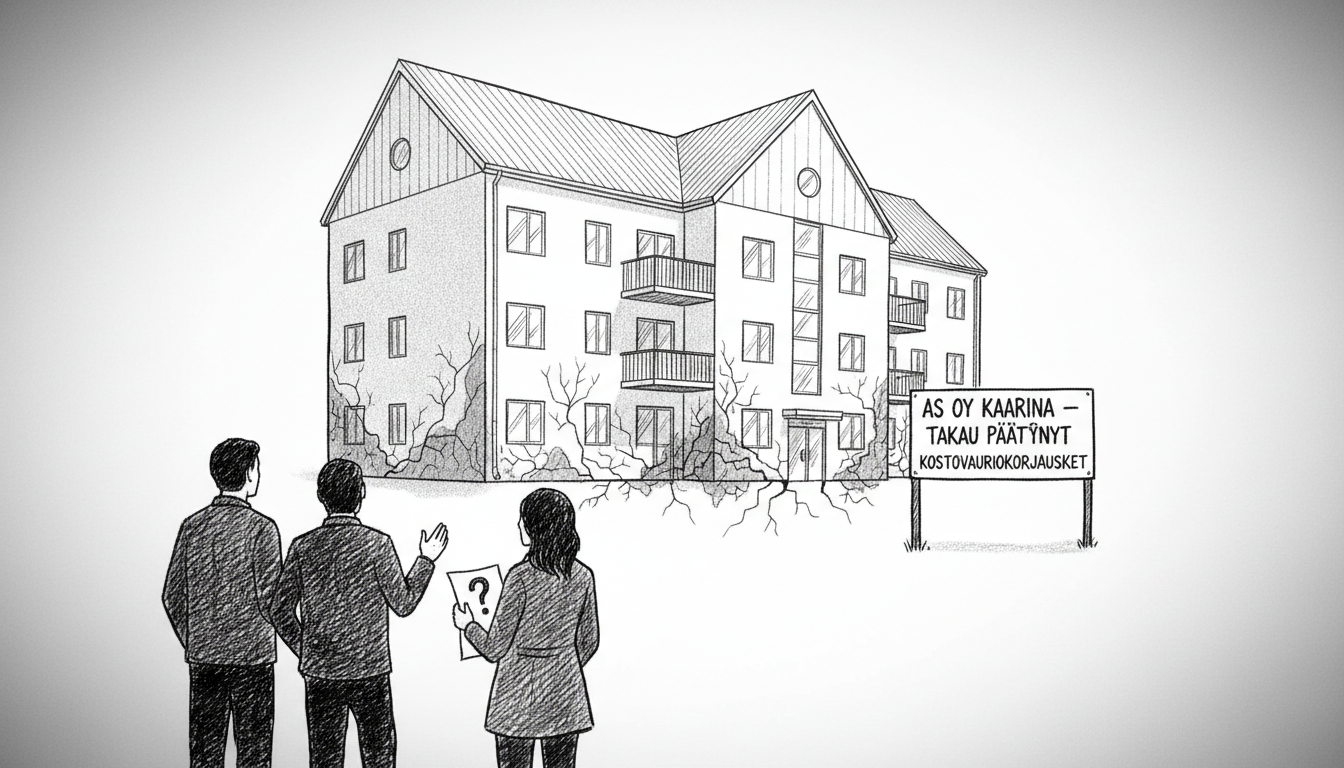Residents in a Kaarina housing cooperative face unexpected bills for expensive drainage repairs. The building's warranty period has expired, leaving homeowners responsible for fixing moisture problems in their storage areas.
Mikko Malmberg, chairman of the housing cooperative board, expressed frustration about the situation. He stated that drainage repair costs now fall on residents' shoulders. The construction company's responsibility period has ended.
Homeowners in the Merimaisema neighborhood have discovered the hard reality of property ownership. When building warranties run out, residents become responsible for major repairs.
One resident described the concerning situation. "When it rained heavily, a water puddle formed here," said Mikko Vesala about his townhouse storage area. "We feared the problem would spread to living spaces."
This case highlights a common challenge in Finnish housing cooperatives. Building warranties typically last 5-10 years in Finland. After this period, residents bear full responsibility for maintenance and repairs.
The Finnish housing system operates through housing cooperatives where residents own shares. They collectively manage and maintain properties through monthly fees. Major unexpected repairs can cause financial strain when not budgeted for.
Drainage issues represent serious concerns in Finnish construction. Proper water management is crucial in a country with heavy rainfall and snow melt. Faulty drainage can lead to structural damage and mold problems over time.
Homeowners now face difficult decisions. They must fund repairs while ensuring the work addresses the root cause. The situation serves as a reminder for all property owners to understand their warranty terms and prepare for post-warranty maintenance costs.
Similar cases have occurred across Finland as buildings age. Many housing cooperities struggle with budgeting for major repairs. This often leads to special assessments that surprise residents with unexpected bills.
The case raises questions about construction quality and warranty periods. Some experts argue longer warranty requirements might prevent such situations. Others note that extended warranties could increase initial construction costs.
For international readers, this demonstrates how Finnish housing cooperatives function differently from condominium systems elsewhere. The collective responsibility model has benefits but also creates unique challenges when major repairs emerge.
Residents must now work together to solve the drainage issue while managing costs. The situation shows why understanding housing cooperative rules and preparing for maintenance costs remains essential for Finnish homeowners.

